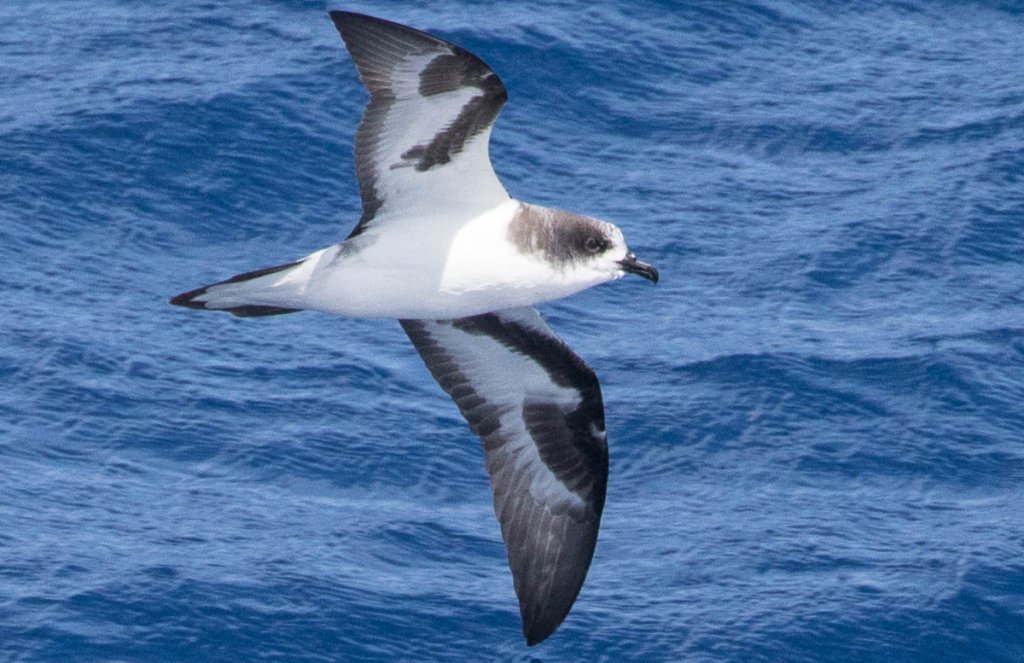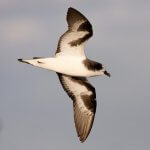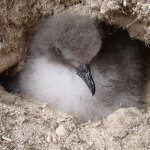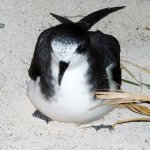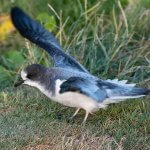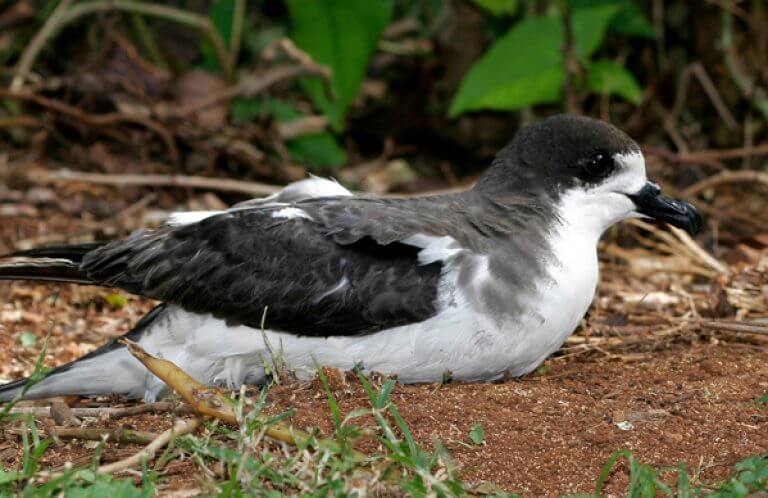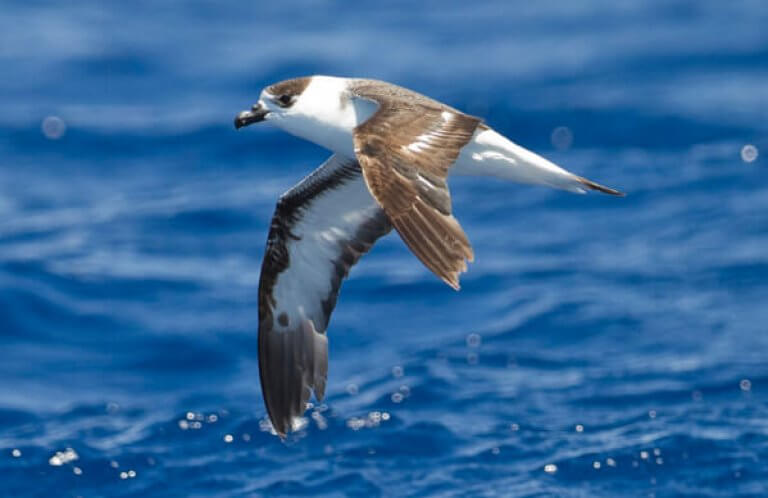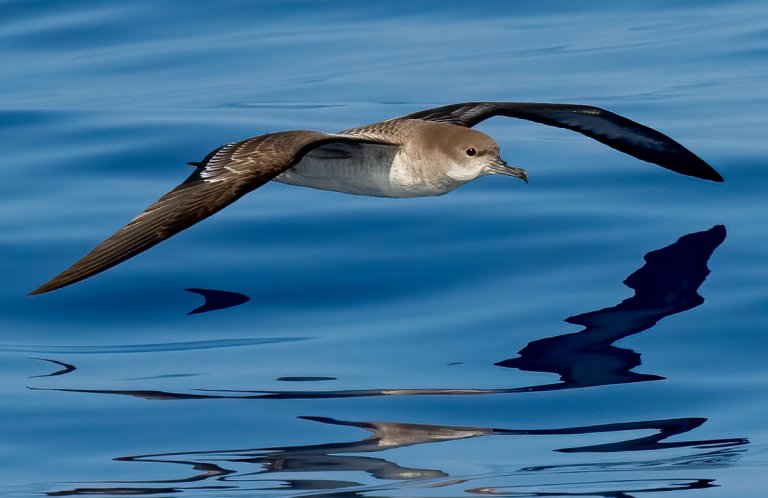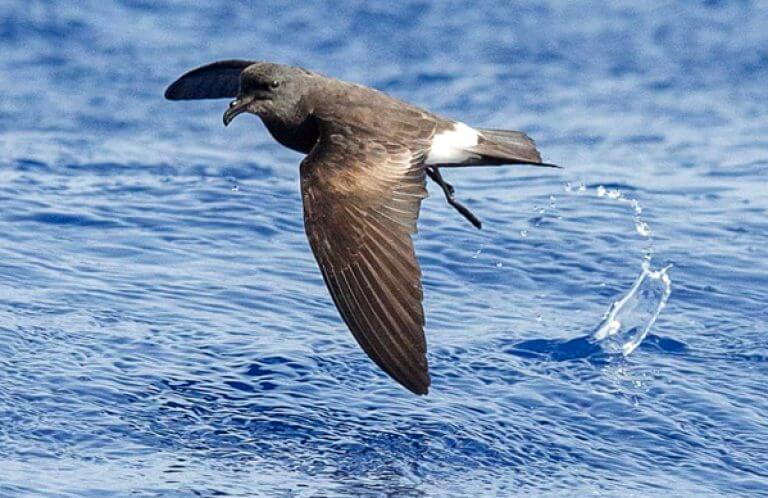About the Bonin Petrel (Nunulu)
The Bonin Petrel is a small seabird that spends most of its life in flight over the open ocean, stealing into remote nesting islands by night to breed. Seen in flight, this species shows pale grey upperparts with contrasting darker wing feathers that create a diagnostic "M" mark across its back. Its underwing is white with a broad black bar and black patch at the bend of wing, or “wrist.” Other ID features include a white head with a black cap and face markings, and a dark half collar on the breast.
The Bonin Petrel's genus name, Pterodroma, derives from Ancient Greek words for "wing," and "runner," referring to the agile, weaving flight style of this seabird and other close relatives such as the Hawaiian and Galapagos Petrels.
Fly-like Flight
The Bonin Petrel and other Pterodroma seabirds, including the Black-capped Petrel, are also known as "gadfly" petrels — a nod to their erratic-looking flight pattern of high, steeply banked swoops and low glides over the ocean's surface. Observers thought that this swift, pendulum-like flight made the birds look as if they were trying to dodge gadflies (horseflies).
Songs and Sounds
On land, the Bonin Petrel gives a growling, low-pitched churr call as a signal to its mate or in defense of its burrow. It also gives a raucous kukuer cry and a high-pitched tititi call.
Listen here:
Breeding and Feeding
Winter Nesters
The Bonin Petrel breeds further north than any other gadfly petrel species in the Pacific Ocean, and begins to breed in the winter, starting each January. The Bonin Petrel nests at these times to avoid competition with larger seabirds such as the Wedge-tailed Shearwater, which will evict and even kill Bonin Petrel chicks for nesting burrows.
Like most seabirds, the Bonin Petrel mates for life. It will remate if one partner is lost. Pairs perform mating flights over the colony, then settle in to dig a nest burrow in the sandy soil. The female lays a single egg, which the pair take turns incubating for almost two months. Their chick hatches covered in light grey down, and is cared for and fed by both parents for several months after hatching. The parents take turns flying out to sea to feed, then returning to their nest to regurgitate high-calorie stomach oil and bits of fish and squid for their chick. The chick fledges around four months after hatching.
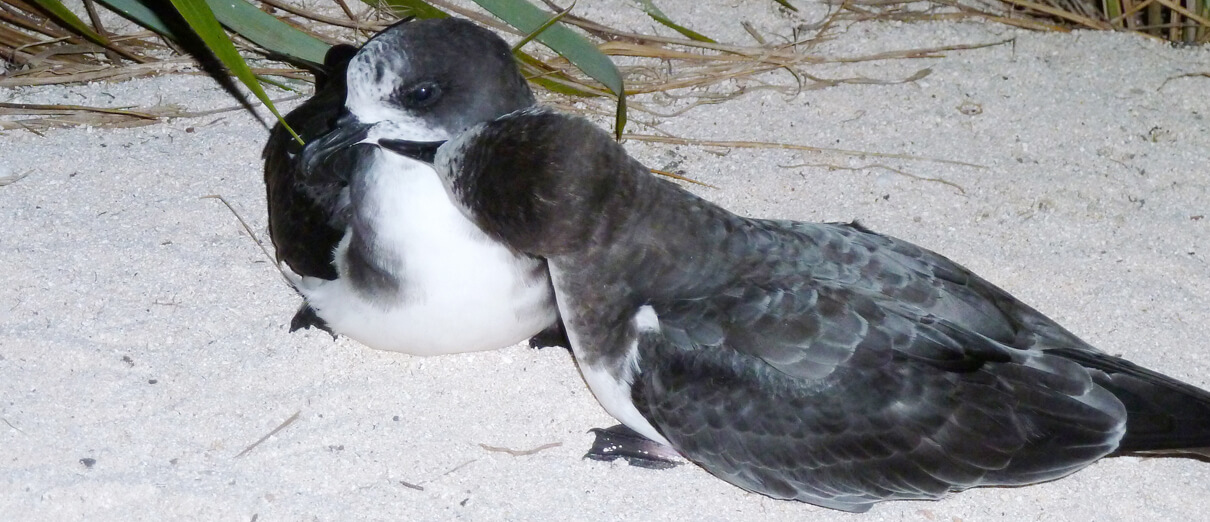
Bonin Petrels generally forage far offshore by day or night, depending on when conditions are right and food is available. It seizes prey while sitting on the water or while hovering above the surface. Unlike other seabirds of its genus, it feeds chiefly on fish, but will also take squid.
Region and Range
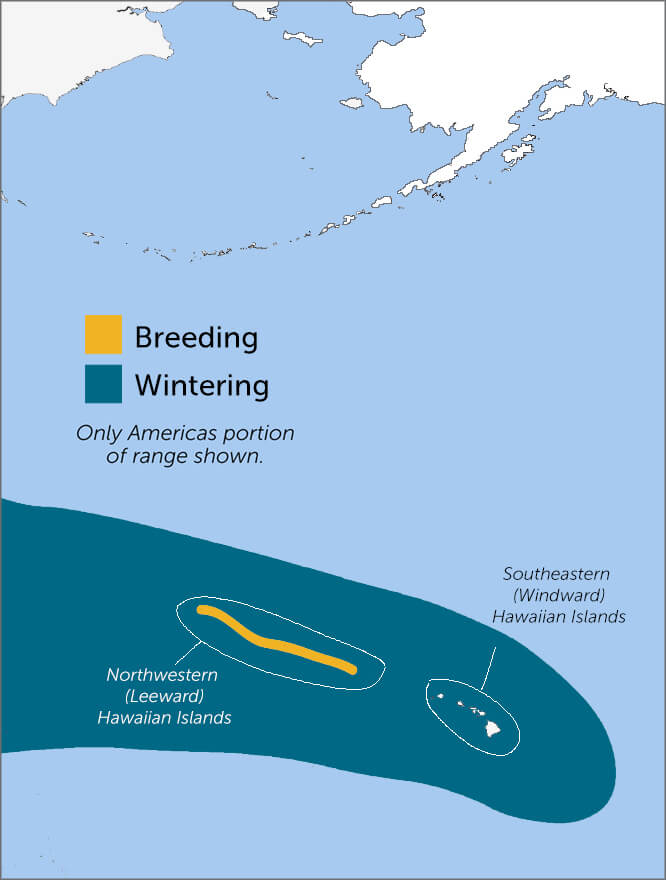
Most of world's population of Bonin Petrel breeds in the Northwestern Hawaiian Islands, concentrated on Midway Atoll and Laysan Island. A tiny percentage breeds 500 miles south of Japan on the Bonin and Volcano islands.
Conservation
The Bonin Petrel once nested throughout the Hawaiian archipelago, but was extirpated from the main Hawaiian Islands after the arrival of human settlers, who trapped them for food. Its nesting success has been impacted by a number of invasive species — introduced mammals such as rats and rabbits, and non-native plants such as Golden Crownbeard, which degrade nesting habitat. Climate change is an increasing threat, as rising seas are threating to swamp low-lying nesting islands. Collisions with overhead wires and artificial lighting pose threats to Bonin Petrels and other seabirds nesting on Midway Atoll.
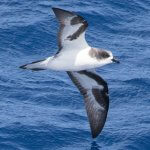
Help support ABC's conservation mission!
ABC has advocated for island restoration projects to bring back native vegetation on Laysan and Midway, where invasive cats and rats have been eradicated. We also supported the establishment of a Laysan Albatross colony on O‘ahu, where a predator-proof fence was built within the James Campbell National Wildlife Refuge in 2016. Since then, partners Pacific Rim Conservation and the U.S. Fish and Wildlife Service have been translocating Bonin Petrels to that site, and the species is now nesting there.
This year, another predator-proof fence was successfully installed on Moloka'i's North Shore, which protects many other nesting seabird species including the Laysan Albatross, Red-billed Tropicbird, and Hawaiian Band-rumped Storm-Petrel. ABC may translocate Bonin Petrels to this location in the future to create another protected colony.
Get Involved
Policies enacted by the U.S. Congress and federal agencies have a huge impact on seabirds. You can help shape these rules for the better by telling lawmakers to prioritize birds and bird-friendly measures. To get started, visit ABC's Action Center.
Plastics pose a deadly threat to seabirds around the world. You can help seabirds by reducing your daily use of plastics. To learn more and get started, visit our Plastics page.
American Bird Conservancy and partners are creating predator-free nest sites for vulnerable seabird species, reducing fishery impacts, and much more. This is a monumental undertaking, requiring the support of many, and you can help by making a gift today.





































